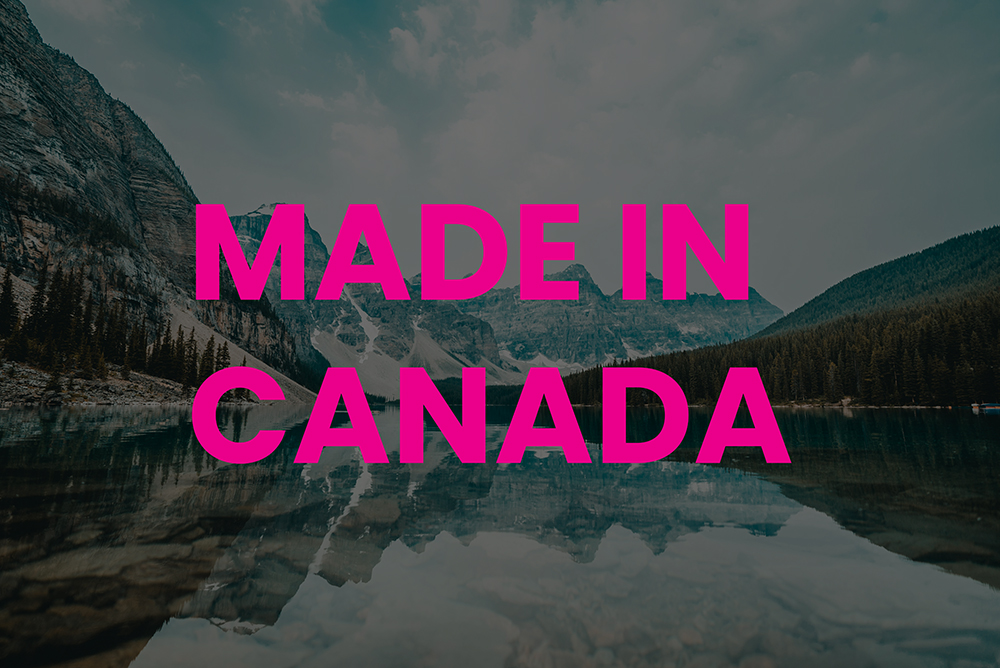Where Is It Made? Understanding Country of Origin (COO) and "Made in Canada"

When you see a product labeled Made in Canada, you might assume that every thread, button, and component came straight from within Canadian borders. But the truth behind a product’s Country of Origin (COO) is a little more nuanced—and surprisingly interesting!
What is Country of Origin?
The Country of Origin refers to the country where a product is considered to be made. It plays an important role in customs regulations, trade agreements, product labeling, and consumer trust. But determining where a product is “from” isn't always as straightforward as it seems, especially when a product is made using materials or components sourced globally.
So How is COO Determined?
Each country has its own regulations for determining COO, but in Canada, the Canada Border Services Agency (CBSA) and the Competition Bureau provide guidance. In general, for a product to be considered Made in Canada, it must meet specific criteria:
Substantial Transformation: If a product undergoes significant change in Canada—meaning its form, function, or purpose is altered—it may be considered Canadian-made. Simply assembling parts isn’t enough; the transformation must be meaningful.
Last Substantial Transformation: If a product is made from parts sourced globally, the COO is the country where the last substantial transformation took place.
"Made in Canada" Claim Requirements: To legally use the Made in Canada label, the Competition Bureau requires that:
-
At least 51% of the total direct costs of producing or manufacturing the product are incurred in Canada.
-
The final substantial transformation must occur in Canada.
-
If the product contains imported parts, it must be clearly indicated (e.g. "Made in Canada with imported materials").
Why Some Materials Come from Abroad
While we’re committed to Canadian manufacturing, the reality is that textile production—especially for woven fabrics—is extremely limited in North America. Most large-scale fabric mills simply don’t exist here anymore. That’s why we source some of our base fabrics from overseas, particularly from China, where there is still a strong and specialized textile manufacturing infrastructure. This allows us to access high-quality, consistent materials that would otherwise be unavailable or cost-prohibitive, ensuring we can offer reliable products without compromising on quality or price.
Safe, Certified Fabrics
We take material safety and quality seriously, which is why most of the imported fabrics we use are OEKO-TEX® certified. This globally recognized certification ensures that textiles are tested for harmful substances and meet strict human-ecological safety standards. OEKO-TEX® certification is especially important for products that come into direct contact with skin, giving both us—and our customers—peace of mind. Choosing certified fabrics aligns with our commitment to quality, safety, and responsible sourcing.
An Example
As an example, let’s take our basic tote bag which is made with fabric woven in China, but is printed, cut, sewn, and assembled into a finished bag in our studio. Since over 51% of the production cost happens in Canada and the final transformation (turning fabric into a usable bag) also happens here, the product is labeled Made in Canada with imported materials.
What About T-Shirts or other blank garments?
T-shirts are a different case when it comes to COO. If a blank T-shirt or other pre-made garment is manufactured in another country—say Bangladesh or Honduras—and then printed with artwork in Canada, it does not qualify as Made in Canada. That’s because the final substantial transformation, which includes the actual garment construction (cutting and sewing), was completed elsewhere. Even though the design, printing, and fulfillment may happen in Canada, the COO of the garment remains the country where the T-shirt was originally made. In this case, a more accurate label would be Printed in Canada on imported garment.
Why It Matters
Understanding COO helps consumers make informed decisions about the products they buy. Many people prioritize locally made goods for environmental reasons, ethical labor practices, or simply to support their national economy. Clear labeling allows for transparency—and builds trust.
At Art of Where, we’re proud to make many of our products right here in Canada. While we source some of our materials globally (for quality and availability), the printing, cutting, sewing, and finishing are all done by our skilled team in Montreal. That means our products meet the criteria for Made in Canada, with imported materials, and we’re proud to share that with you!
